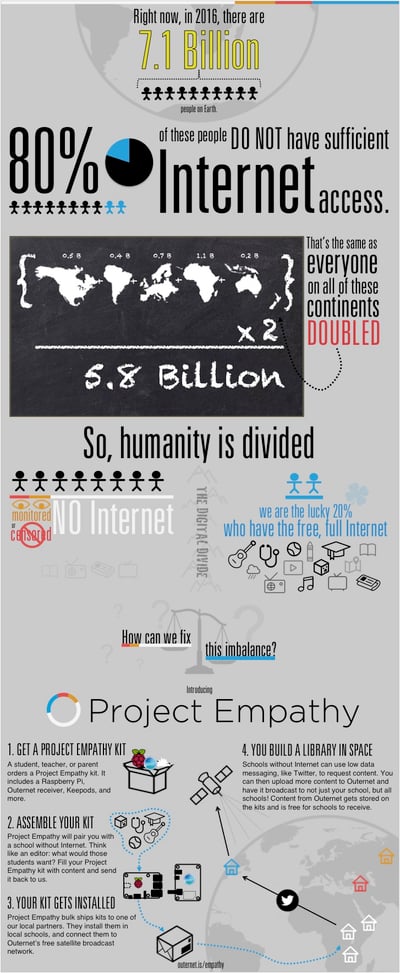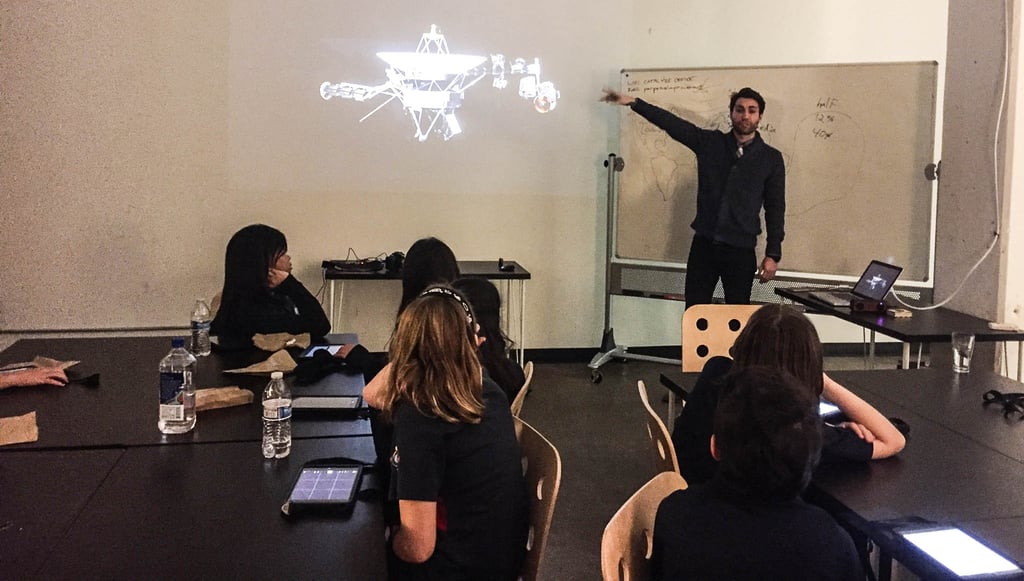GEMS STUDENTS DELIVER CONTENT TO THE WORLD
February 19, 2016 admin Technology, GEMS World Academy Chicago, World of Innovation, Outernet, Global Citizenship, Service
GEMS World Academy-Chicago recently announced an exciting partnership with Outernet, a local technology organization that helps deliver Internet-based content to users via satellite transmission. The two institutions have launched a global service project called Project Empathy, in which our seventh-graders build and deliver libraries of content for people who live in areas with little or no access to the web. Project Empathy challenges students to draw on multiple academic disciplines as they work, and it encourages them to develop a nuanced sense of their connections to people across the world.
With the project underway, we spoke to two of its architects — Thomas Steele-Maley, the lead technology and innovation officer at GEMS World Academy-Chicago, and Thane Richard, chief content officer at Outernet — about what makes it such a unique and rewarding initiative. Here are their answers.THOMAS STEELE-MALEY
THANE RICHARD
